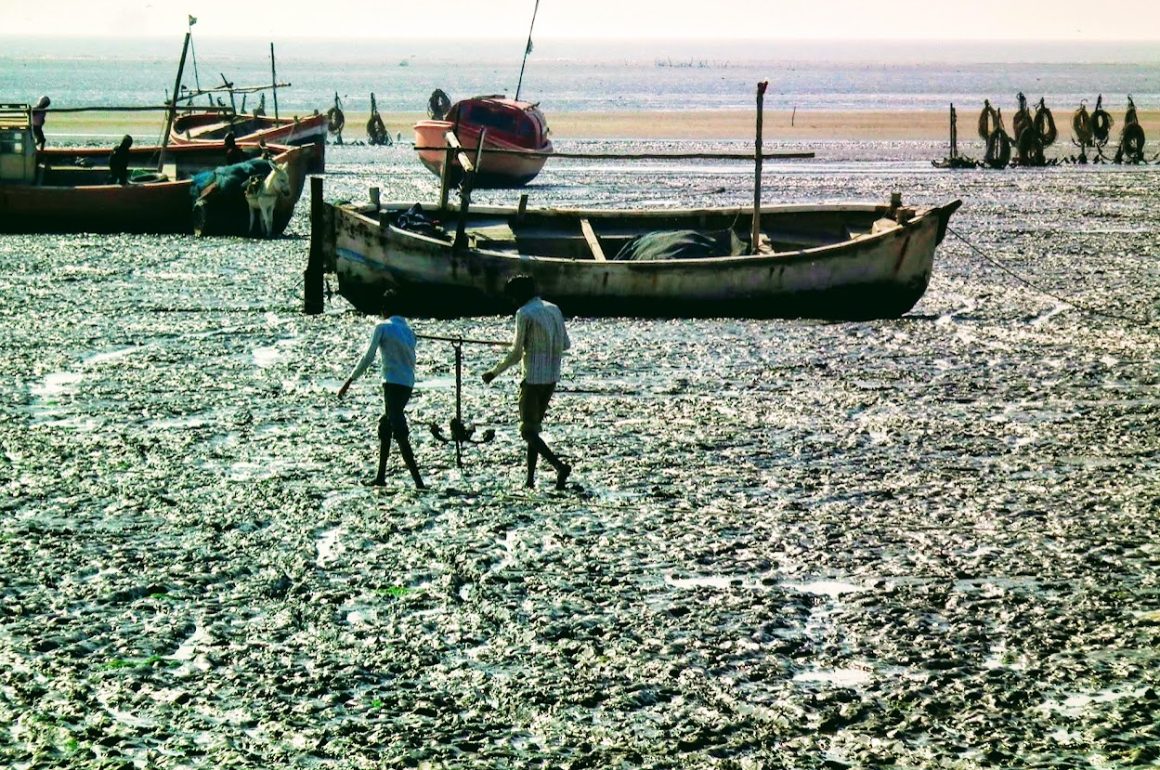
Passing another horse cart loaded with plastic barrels of drinkable water… Well trotted dirt road winds through the open savanna with low thorny acacias and dry, flattened grass in the district of Kutch, Gujarat (India). The blueness of the January sky is being broken by numerous and noisy flocks of wintering Common Cranes.
In front of us is an endless mud bar with a Western Reef Egret and a Common Greenshank. The road now follows the dyke with a Crested Lark on it. Another water loaded cart, this one being pulled by two zebu oxen. I leave acacias behind and enter the village, at first raised on low concrete platforms, barely half a meter above the tidal mud flat.
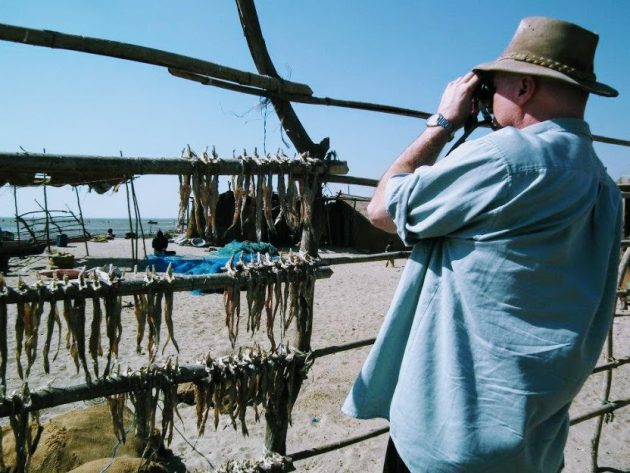
And the village consists of tents, a lot of tents made of jute, behind the horizontal stick fences. The whole village smells of fish – its raison d’etre. One goat is feeding on fish hanging to dry along the sticks. There is not a single tree in the entire village. The road winds among the homesteads enveloped in a thick and salty scent of sun-drying fish, by children playfully chasing each other next to muddy puddles and long-drop loos in the shape of separate tents… Another cart, this time an ass cart loaded with a huge fishing net and – the end.
The end of the road. The end of the village. The end of the World. In front of us is a vast mudflat and, at the far horizon, the sea.
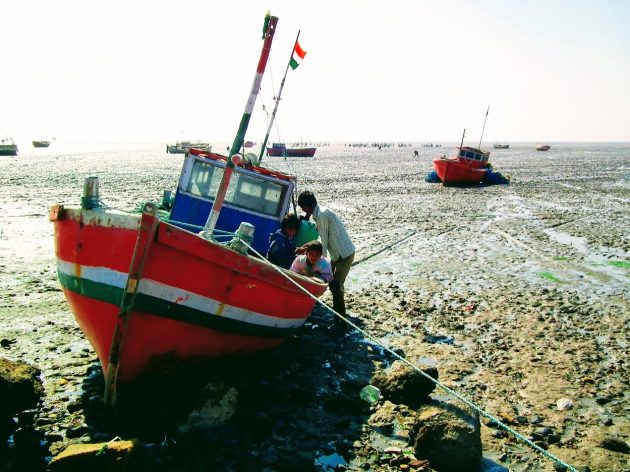
The Arabian Sea. Between the sea and the village, on now dry tidal flats, gulls and egrets are wandering among the fishing boats lying on their sides and waiting for the tide. India being one of the centers of the ship breaking industry, cutting the hulls apart for scrap recycling, these boats have strange names and even stranger ports of registration. The one in front of me is registered in Panama. All of them are former life boats, adapted into fishing boats and now waiting for the tide.
Surrounded by a bunch of shy, giggling, curious and, I must add, well behaved children, I scan the flats. What is this strange foreigner doing in their jute village?
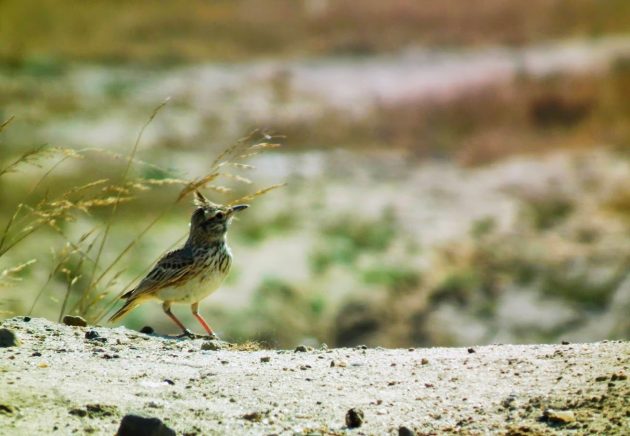 Crested Lark
Crested Lark
Indeed, what am I looking for? A Crab-plover. An unusual white-and-black lapwing sized wader that is supposed to be pushed closer to the village with the approach of a high tide. It seems that I was misinformed about the high tide time, expecting it at 1 pm. I come here two hours ahead, searched the flats without success, than visited a nearby Bhadreswar Jain Temple, giving the tide some more time, but once back in the village, the Arabian Sea was not any closer than before.
Searching the long beach, far-away boats and among them, some white spots: Heuglin’s Gulls, Gull-billed Terns… Not a trace of a Crab-plover, which is known to be wary and prone to take flight at a distance. Walking along the beach, scanning from time to time: tents, gulls, fish, dogs, asses, fishermen and so on. No Crab-plovers.
I have never seen this plover and it is already an old fascination, dating from the time when I used to live at the edge of the Kalahari Desert. The nearest seas were 1000 kilometers to the east and 1500 to the west, when I saw a Crab-plover on the front of the Africa Birds & Birding magazine, photographed on some beach in Mozambique. And I told my guide, Chirag Solanki, that I have wanted to see it ever since! He nodded the Indian style and bravely said: “It is possible.”
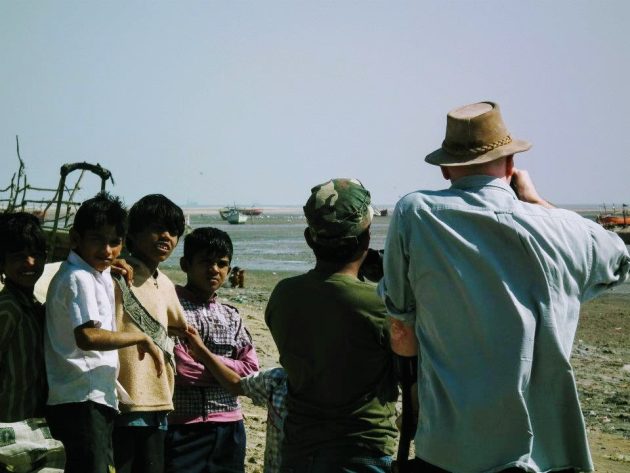
And here we are, on a beach without a sea, inhaling the strong scent of a salted fish and scanning at least a kilometer wide mud flat. Chiku raises a fist and smiles victoriously. I come closer; he is showing some very far-away white spots. “Are you sure,” I ask suspiciously. “Not entirely, but I think they are.” I am observing the white spots, thinking how I cannot tell them apart. What to write in my notebook? “White spots at a distance?”
And then the white spots started moving, walking… one extend its long neck and turns into a Great Egret. The other lowers its black head and neck, becoming a Black-headed (Oriental) Ibis. Not even close to a Crab-plover (was Chiku trying to cheer me up?). This way or that way, I haven’t found my plover.
But, as I once loosely quoted Ulrich Gregor and Enno Patalas’s book “Geschichte des Films” (History of Films), it is not about the success of the attempt, but the attempt hides a deeper meaning in itself. Perhaps the meaning is hidden in the village at the end of the World, between the land and the sea? Or my next destination should be that beach in Mozambique (tourism officials of Mozambique, I sure hope you do read my blog)?
Base Camp
The most charming accommodation in the area is available at the tented Beach Camp, inside the 450-acre garden at Vijay Vilas Palace near Mandvi. Despite not being widely recognized as a birding area, the beach (gulls and waders), the Camp and the Palace Gardens (songbirds) and the surrounding area offer some nice birds (if you don’t mind listening the cranes honking at night from a comfortable bed in your spacious tent).
Photos copyright © Dusanka Stokovic Simic & Dragan Simic
Find the later stages of the same tour here:
Naliya – the Great Indian Bustard
Nakhatrana – the Grey Hypocolius













That Crab Plover is high on my list of birds I really need to see. What a strange looking bird!